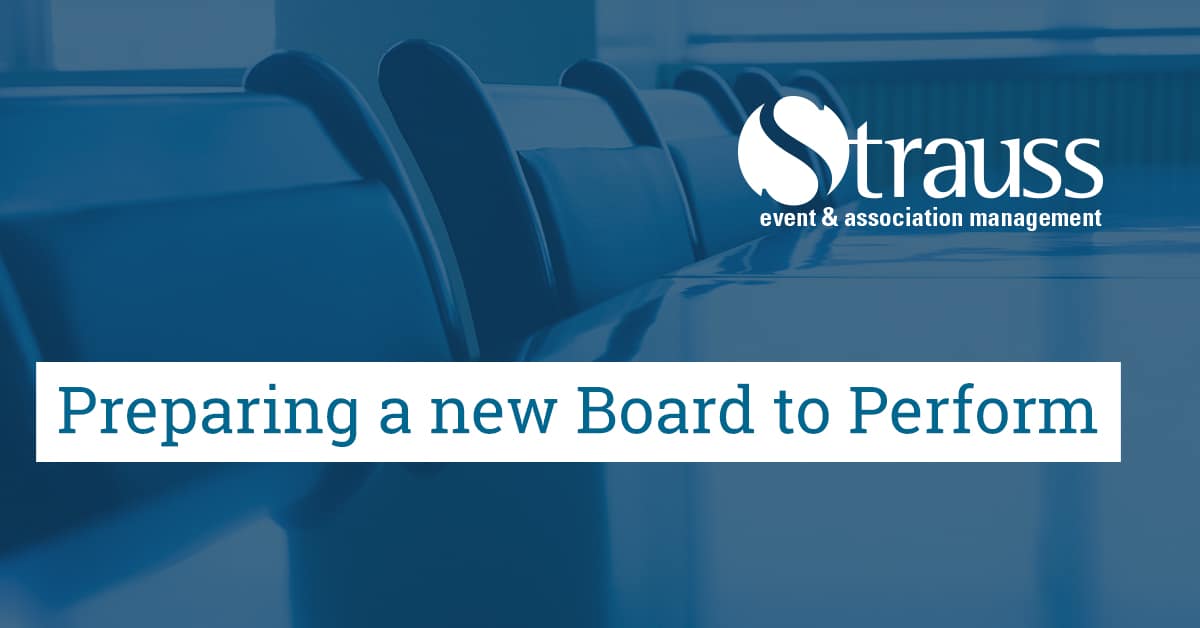For many associations, board turnover is perpetual. This can be great for an association but can also be disruptive. It is important to be prepared for a new group of volunteers and to empower them to use their capabilities to perform to the best of their ability, ultimately resulting in little or no disruption to the association and its performance. But how can this be accomplished?
Having a consistently new set of volunteers – often with little or no board experience- could easily bring complications to board management. I considered who could be volunteering for these positions and what their leadership intentions with the association might be. I began considering many topics and came up with possible solutions to ensure the board of directors is ready to hit the ground running.
Make the Effort to Know Association Members
Board succession planning should be never ending. There are many areas in which association leaders should always be preparing for the annual nomination process:
It is very important that board members and the association manager get to know the members to identify who the leaders are within the association and how they could bring value to the organization. These people can be your future board leaders. Encouraging strong members to become involved in leadership at many levels, from task groups to subcommittees, will provide them with the background of the organization and the way it is managed. This will help to ensure that new volunteers are familiar with the organization’s practices and with the expectations of volunteers.
For more information on recruiting great board volunteers, read my colleague’s blog, “Identifying and Mentoring Future Association Board Leaders”.
Identify and Recruit These Important Attributes in your Next Board Members
The board should collaboratively create a listing of the ideal attributes of a great association board member. The following are traits of board members that I’ve had the pleasure of working with:
- great judgement
- wisdom
- motivation and interest
- compatibility
- e.i.: with the Chief Staff Officer and other board members
- effective coach and mentor
- This is especially crucial in the association management model, as the staff are not always experts in the association’s industry
Since new board members are likely to have little or no board experience, these personal characteristics can provide a guide for measuring potential. It is important that the nominating committee takes the time to look at these attributes carefully.
The Importance of Open Communication
It is very important to have regular communication between the association manager and board chair. When a communication plan is executed properly, this strategy will resonate with he entire board of directors and will result in clearer objectives and roles . In my opinion, the most important part of working with a new board is to first develop open communication between the association manager and the board chair.
Please read the following blog for more information on the relationship between association leaders: “Association Leadership Creates A Top Performing Association”.
Educating new Board Members
Once new board members are elected by the members of the association, it is important for the board chair, and repeat board members to open communication channels with the new volunteers. Review job descriptions, expectations, codes of conduct, and share confidentiality agreements, and association information.
The Importance of Board Role Clarity
It is very important to clearly define roles and expectations for new board volunteers in the onboarding process. Many times, people join boards to further their personal agendas. For example resume building, a job requirement or to make new contacts. Always engage with all board members. Create an environment of open communication within the entire board of directors. Clearly define and follow up on each separate roles.
Above all, the communication from the board chair to all board members should be clear and concise and all board members are reminded that their position does not grant them power over staff or the membership. There is a zero-tolerance policy for bullying or abuse of power from volunteers.
In Conclusion
In my association management experience and Canadian Association Executives (CAE) training, I’ve learned that communication is the key to developing a great board of directors. Everyone is busy. However, open communication helps eliminate board bullying, inefficient meetings, ignored action items, and operations mismanagement. Begin by encouraging strong members to participate within the association. Lastly, ensure the intentions of board members are sincere and work with staff to bring your association to new levels.

